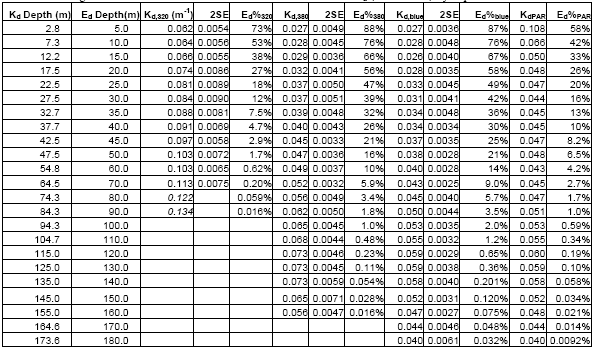Ultraviolet Radiation and Bio-optics in Crater Lake, Oregon, 2005
DISCUSSION
Future Research on UVR in Crater Lake
Future work on UVR in the Crater Lake ecosystem should include experimental manipulations of UVR exposure of Crater Lake organisms (e.g. plankton and moss) to determine sensitivity of survival and productivity at different depths, continuous monitoring of incident UV-B and UV-A radiation, and better monitoring of the optical constituents of the water column that influence UVR penetration, especially in the upper 30 m where it is currently difficult to characterize UV attenuation. Crater Lake is a unique site for investigation of UVR effects on an aquatic ecosystem because it combines unusual UVR transparency with a wide range of depths below the mixed layer where summer exposure to UVR and PAR will be relatively stable from day to day except for the fluctuations in UV-B controlled by stratospheric ozone.
To explore both UV transparency and organic carbon dynamics, a CDOM fluorometer should be added to the suite of sensors in routine CTD profiles, and these data correlated periodically with measurements of particulate absorption spectra and particulate and dissolved organic carbon concentrations for different depths. The ecological control of the microbial community in different depth zones should be explored to clarify the relative importance of stratospheric ozone, nutrient sources (e.g. precipitation versus upwelling), and trophic interactions.
The response of Crater Lake to future climate change will likely involve its sensitivity to the timing and magnitude of changes in precipitation and stratospheric ozone. Precipitation appears to influence UVR transparency through influx of suspended sediments and phytoplankton nutrients. Ozone appears to protect the phytoplankton community from UV-B radiation, which may allow phytoplankton with moderate UV-B resistance in the upper water column to shield those deeper (and presumably more sensitive) organisms from UVR.
Table 1. Average diffuse attenuation coefficients and % attenuation of Ed (1996–2002) by depth.


